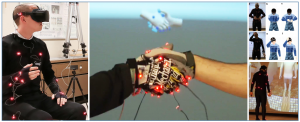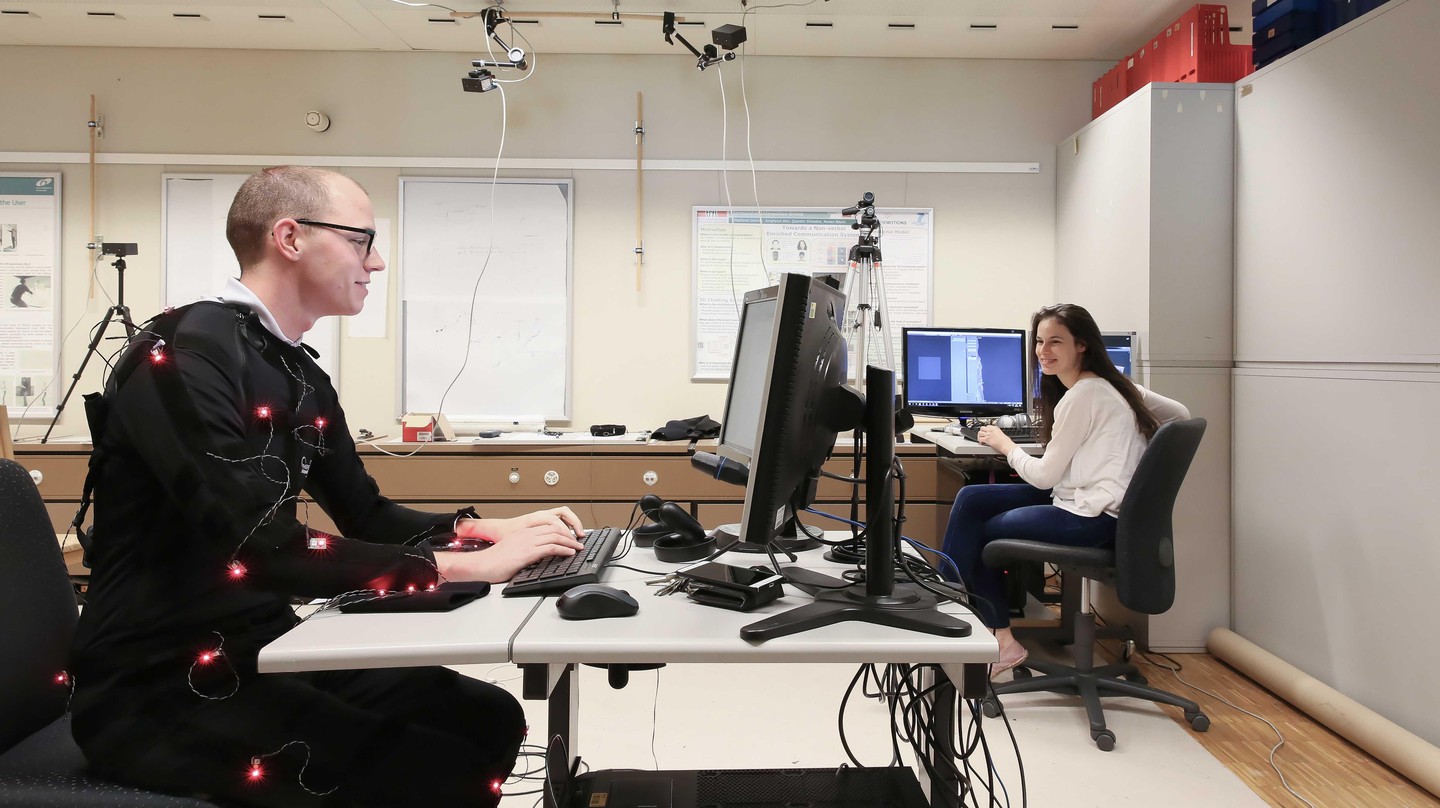![]()
Immersive Interaction Research Group
FYI: we don’t hire any staff nor intern as the research unit will close in early 2026.

Our researches focus on embodied interactions, i.e. involving users through full-body movements to achieve new classes of tasks or activities not feasible with traditional human-computer interfaces. It can be employed for training and rehabilitation or for the evaluation of potentially complex environments. We also aim to better understand and mitigate cybersickness as it is still seriously hampering XR adoption. In collaboration with EPFL-LNCO we conduct experiments to assess the human embodiment sensitivity to various factors so that we can propose human-centered algorithms for full-body interaction. Independently we also investigated how to impersonate a full range of 3D characters (performance animation). Finally, our Know-how in human posture control has been used for proposing new 3D sketching tools for animators.
Here are our most recent journal papers until spring 2025, visible in Open Access:
- IEEEVR25/ TVCG “An embodied body morphology task for investigating self-avatar proportions perception in Virtual Reality“. Contrary to prior more traditional approaches investigating the perception of human proportions, our embodied controlled experiment highlighted a preference towards longer legs proportions.
- IEEE TVCG “The Least Increasing Aversion (LIA) Protocol: Illustration on Identifying Individual Susceptibility to Cybersickness Triggers“. This new methodology is proposed to assess the impact of experimental factors causing potentially some discomfort, while minimizing the number of sessions.
- IEEEVR24/ TVCG “Who says you are so sick? An investigation on individual susceptibility to cybersickness triggers using EEG, EGG and ECG“. The objective data analysis of this quite rich exploratory study uncovers new knowledge about individual susceptibility to rotation axes.
- IEEEVR24/ TVCG “In case of doubt, one follows one’s self: the implicit guidance of the embodied self-avatar”. We show that the Self-Avatar Follower Effect also happens when the participant is unsure about what to do while performing large movements.


